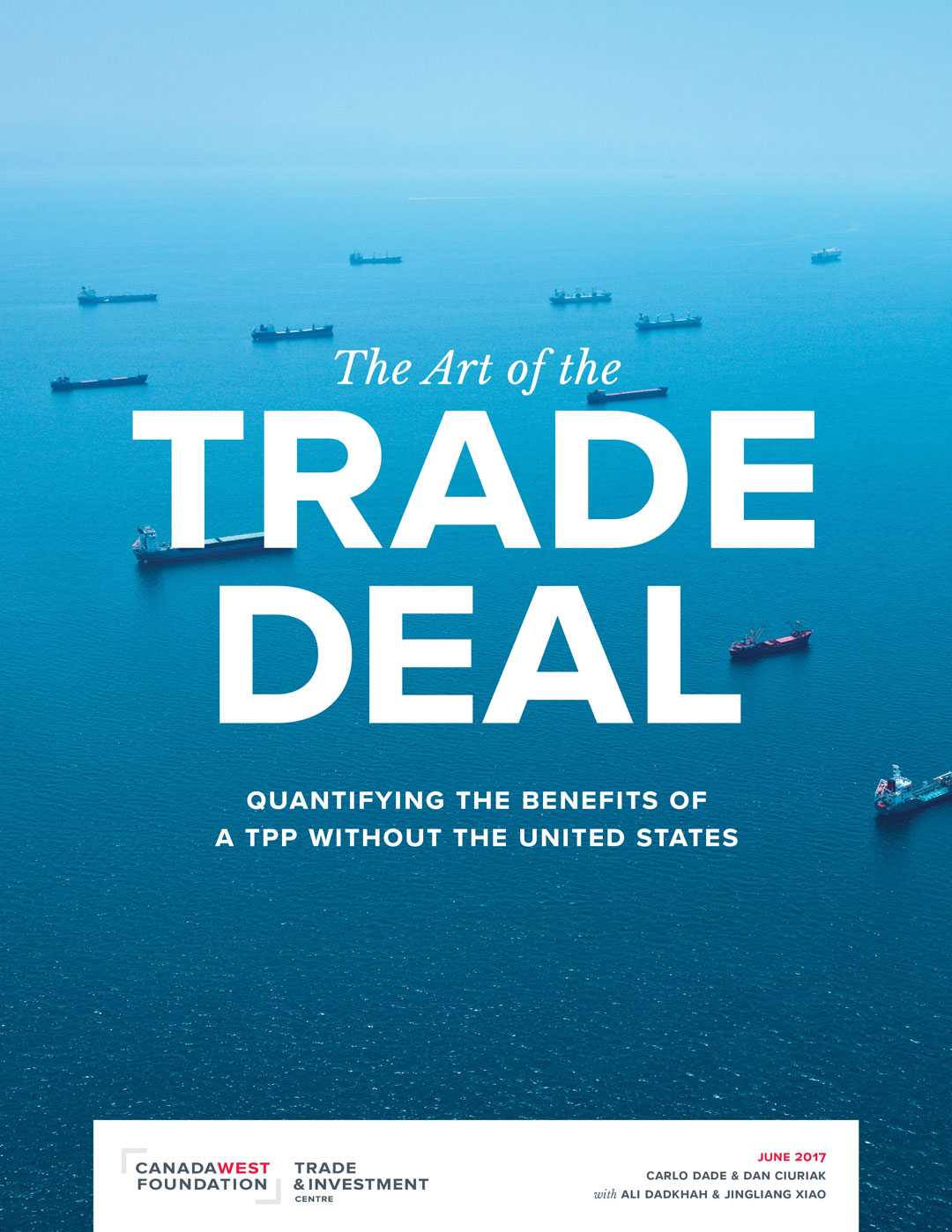TRADING UP
HIGH STAKES FOR CANADIAN AG IN GLOBAL TRADE NEGOTIATIONS
BY NATALIE NOBLE
As Canadian trade negotiations continue with potential global partners, opportunity for economic growth in agriculture is greater than ever. The prospect of modernizing the North American Free Trade Agreement (NAFTA) and fully implementing agreements with large, rapidly expanding populations in the Trans-Pacific, the European Union (EU) and China holds massive opportunity.
NAFTA: 23 YEARS OF GROWTH AND PROSPERITY
Although NAFTA was on shaky ground after fourth-round talks in October, trade between Mexico, the United States and Canada has vastly increased Canadian ag industry export dollars since the agreement’s inception in 1994. With bilateral agricultural and agri-food trade reaching C$62 billion in 2016, the United States is Canada’s largest agricultural trading partner and Mexico is the fourth-largest, with C$1.7 billion in agri-food products exported in 2016.
Alberta Barley chair Jason Lenz said renegotiation on behalf of the barley industry is focused on maintaining current provisions. With the United States and Mexico respectively the first- and third- largest Canadian malt importers, fully integrated trade between the three nations is critical to the industry, particularly through duty-free access, phytosanitary alignment and the elimination of non-tariff barriers (NTBs).
“We don’t anticipate much change in the renegotiations where we’re concerned,” he said. “Barley farmers are thriving under the agreement, and the majority of agricultural commodity industries have been thriving since it came about.”
Barley farmers want greater harmonization in the regulation of residue limits and crop input approvals. Better synchronization between Canada’s Pest Management Regulatory Agency and its sister organization in the United States could allow for crop inputs—including herbicides and seed treatments—to cross the border more easily.
In addition, a low-level presence (LLP) policy would streamline the trade of new seed varieties. Common LLP policies would encourage increased market access and innovation in both countries by giving farmers and researchers faster access to new varieties and technologies. “The process now happens quite slowly, or not at all,” said Lenz.
Members of the industry also advise care in handling issues related to Canada’s supply-managed industries. “Our organization is not advocating for the preservation or the dismantling of supply management in the renegotiations,” said Lenz. “For the dairy industry, this is a sensitive subject, and they’re important to us because we feed some of those animals. We just hope that if our government has to make concessions in this area, it doesn’t affect us with unintended consequences.”
After speaking before the House of Commons Standing Committee on International Trade this past September, Lenz commended the ag industry’s primary trade negotiators and the Canadian government for listening to stakeholder concerns. “We appreciate the government engaging with us and ensuring we’re heard,” he said. “We want to ensure the cropping industry does not lose anything we have right now with NAFTA. We trust that our negotiators will hear us and make improvements.”
Cereals Canada president Cam Dahl sees potential for improvement in the alignment of regulatory processes and reaching a common understanding on risk assessment in pesticides. “It’s important to recognize each country’s risk assessment process so we don’t have misalignment or products being approved in one of the three countries without being approved in the others,” he said. “Also, to have common understanding on new plant technologies so we share a regulatory approach.”
He added that renegotiation brings the opportunity to set up a regulatory co-operation chapter within the agreement to address unanticipated concerns. “We need a process to address trade barrier issues that will pop up in five, 10, 15 years.”
“Having access that is free from tariffs, border taxes, protectionist NTBs and regulations is paramount to renegotiating NAFTA,” said Canadian Agri-Food Trade Alliance (CAFTA) executive director Claire Citeau. “We are seeking a do-no-harm approach. The first priority of the Canadian government must be to maintain the success of the agreement by keeping the free and fair access we have.”
THE TRANS-PACIFIC: CANADA’S DOORWAY TO JAPAN
Last January, the United States withdrew from the Trans-Pacific Partnership (TPP). Canadian officials have since attended meetings hosted by the remaining 11 countries. Canadian agriculture and agri-food stand to win big, as striking a deal eliminates U.S. competition in several Asian markets. Ag industry players hope Canada will be more politically supportive of TPP11, as it would secure a deal with Japan.
“We’re seeing engagement from the other TPP members,” Dahl said. “Japan, Australia and New Zealand are pushing for an agreement. I wish Canada was more involved in that leadership, but we are seeing movement on that front.”
Canadian competitors in the region have free trade agreements (FTAs) with key countries such as Japan. Last August, Japan initiated a 50 per cent snap-back tariff on Canadian beef. “Australia is the beneficiary of that because they have an FTA there,” Dahl said. “If our competitors have these agreements and we don’t, we’re at a disadvantage.”
TPP11 also holds tremendous potential for growth in other markets. Countries including Indonesia, a major wheat market, and South Korea have interest in joining. “If we can be at the table when those countries are negotiating access, it would significantly benefit Canada. There’s also the competitive advantage of securing FTAs with these countries while the U.S. is not involved,” Dahl said. “There will be real consequences if the agreement proceeds and we’re left behind.”
Canada West Foundation senior policy analyst Naomi Christensen said our country has reason to join and champion TPP11. “All Canada needs to do is ratify it. It will not take resources from NAFTA renegotiations because it does not require a lot of renegotiation itself.”
She added that American businesses pushed for many measures in the existing TPP. “So, if Canada and Mexico ratify this agreement, we will have trade measures with 10 other countries the U.S. does not, yet their businesses really want,” she said. “It will increase pressure on them and give Canada leverage in the NAFTA renegotiations.”
Signing TPP11 is of particular importance to Western Canada according to The Art of the Trade Deal, a Canada West Foundation report outlining the benefits of signing a partnership in the Trans-Pacific without the United States. It estimates annual gains of $29 million in wheat and cereal exports and $18 million in oilseed and vegetable oil exports when the agreement is fully implemented in 2035. Annual beef exports, projected to increase by more than $500 million in Japan alone, are almost 60 per cent over the original TPP projections and good news for feed producers.
While NAFTA and the TPP are the focus of attention, the Canada-European Union Comprehensive Economic and Trade Agreement (CETA)—provisionally implemented in September of 2017—may yield additional benefit. CAFTA research estimated it has the potential to drive additional exports of up to $1.5 billion per year, including $100 million in grains and oilseeds, $600 million in beef, $400 million in pork and $300 million in processed foods, fruits and vegetables. As well, China continues to rise as an export target. “CAFTA urges the Government of Canada to pursue an FTA with China,” said Citeau. “Agri-food exports to China surpassed $6 billion in 2016. A trade agreement would allow our agri-food exporters to punch through in the world’s second-largest economy with enormous growth potential.”







Comments